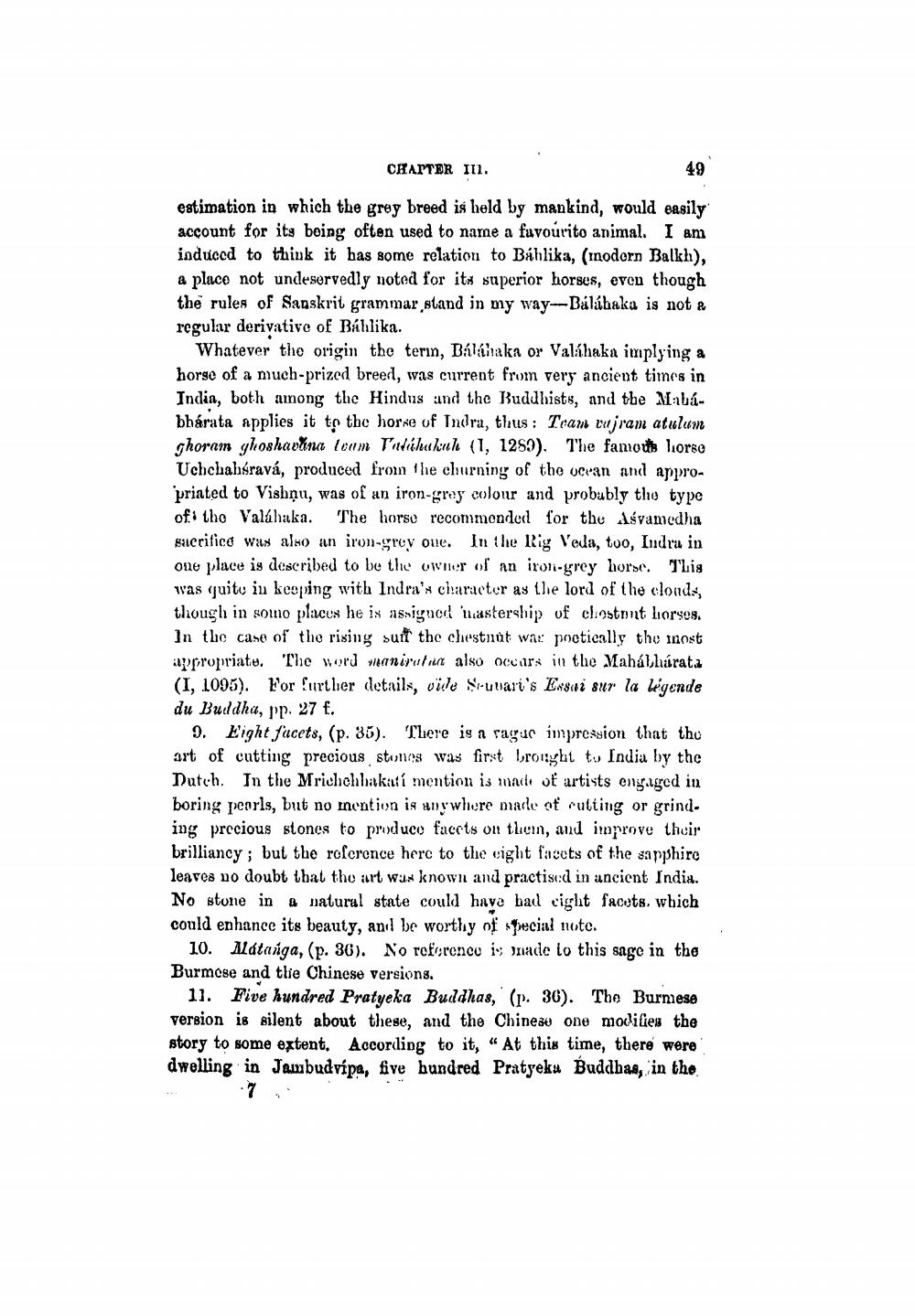________________
CHAPTER IN.
estimation in which the grey breed is held by mankind, would easily account for its being often used to name a favourito animal. I am induced to think it has some relation to Báhlika, (Inodorn Balkh), a place not undeservedly noted for its superior horses, even though the rules of Sanskrit grammar stand in my way-Balábaka is not a regular derivative of Bahlika.
Whatever the origin the terin, Bálánaka or Valáhaka implying a horse of a much-prized breed, was current from very ancient times in Indin, both among the Hindus and the Buddhists, and the Mababhárata applies it to the horse of Indra, thus: Tean vujram atulum ghoram ghoshavana loum T'ndihukah (1, 1289). The famous lorso Uchchahýravá, produced from the churning of the ocean and appropriated to Vishņu, was of an iron-grey colour and probably the type of the Valáhaka. The horse recommonded for the Asvamedha sacrifice was also an iron-grey one. In the Rig Veda, too, Indra in one place is described to be the owner of an iron-grey horse. This was quitu iu keeping with Indra's character as the lord of the clouds though in somno places he is assigned mastership of chiostnut horses. In the case of the rising suit the chestnut was poetically the inost appropriate. The word wanirute also occurs in the Maháblárata (I, 1095). For further details, vidle Sulari's Ensui sur la légende du Buddha, pp. 27 f.
9. Eight fucets, (p. 35). There is a rague impression that the art of cutting precious stones was first brought to India by the Duteh. In the Mrichchhakatí mention is made of artists engaged in boring peorls, but no mention is anywhere made of cutting or grind. ing precious stones to produce facets on them, and improve their brilliancy; but the rolerence here to the cight facets of the sapphire leaves no doubt that the art was known and practised in ancient India. No stone in & patural state could have bad cight facets, which could enhance its beauty, anıl be worthy of special noto.
10. Mátanga, (p. 30). No reference is onade to this sage in the Burmese and thie Chinese versions.
11. Five hundred Pratyeka Buddhas,' (p. 36). The Burniese version is silent about these, and the Chinese one modifies the story to some extent. According to it, “At this time, there were dwelling in Jambudvípa, five hundred Pratyeku Buddhas, in the




